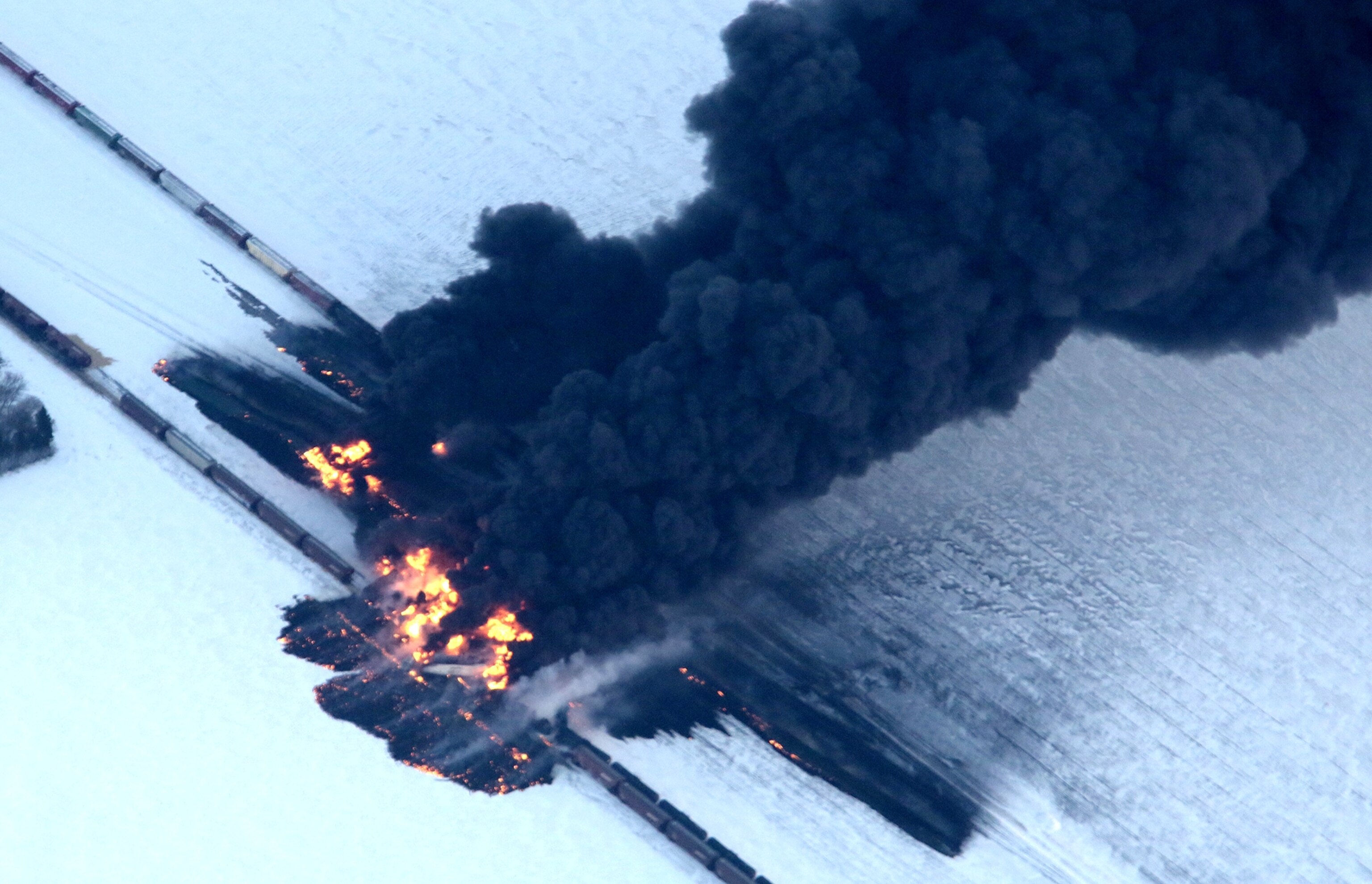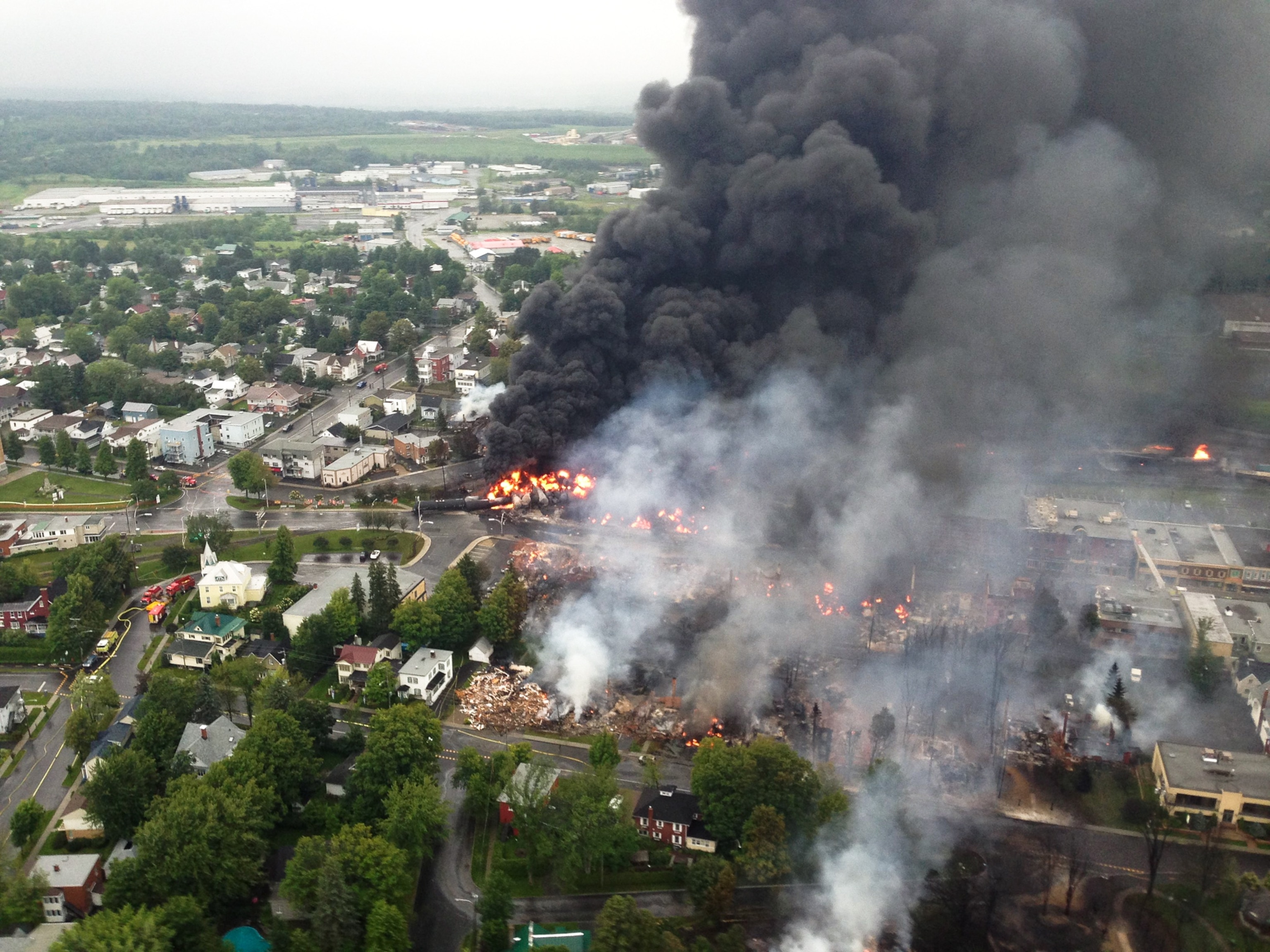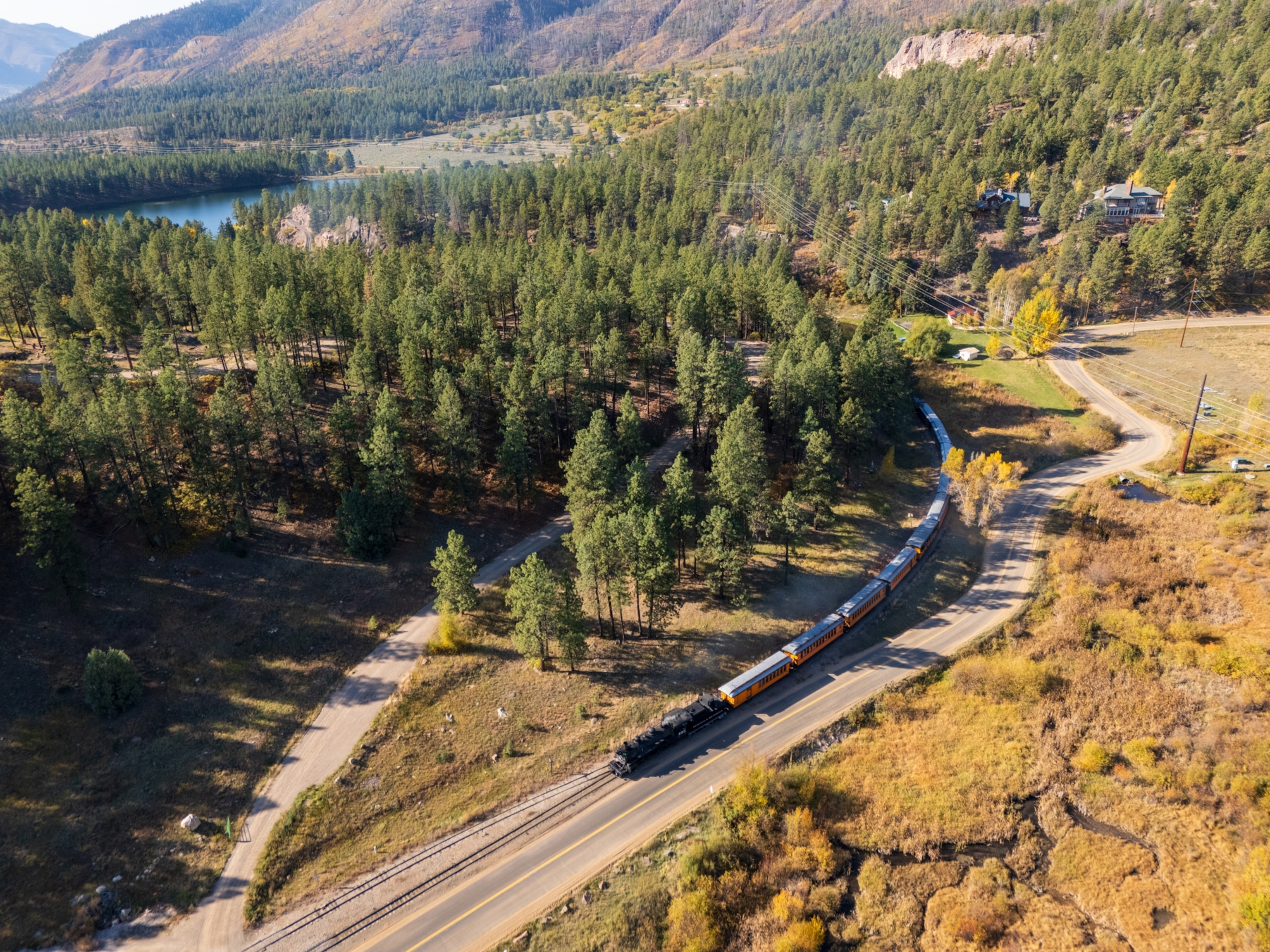
N.D. Oil Train Fire Spotlights Risks of Transporting Crude
Cause of the collision near Casselton is still under investigation.
A fiery train collision in North Dakota has rattled the residents of a state experiencing both the benefits and pitfalls of an oil boom. (See related photos: "Bakken Shale Oil Boom Transforms North Dakota.")
A 112-car train carrying grain derailed on Monday and collided with a 106-car eastbound train carrying crude oil, outside Casselton, North Dakota. The collision set off a blaze that engulfed at least 21 cars, according to the operator of both trains, BNSF.
The accident points to the dangers of rail transport of crude oil, sometimes overlooked amid a U.S. debate over the wisdom of building oil pipelines through the Midwest. The collision follows a deadly oil train tragedy earlier this year in Canada.
In the North Dakota accident, 19 cars carrying crude oil derailed, along with one "buffer car" carrying sand to separate the locomotive from the crude tankers, according to the National Transportation Safety Board (NTSB). The accident occurred one mile west of Casselton, a town of about 2,400 residents near Fargo and the state's eastern border (map).
No injuries had been reported, but residents of Casselton were forced to evacuate as plumes of black smoke rose and spread from the crash. Two other townships near Casselton were encouraged to evacuate as well.
Authorities said the fire would need to burn off, because the blaze was too dangerous for firefighters to approach. The NTSB, Federal Railroad Administration, and Pipeline and Hazardous Materials Safety Administration have sent teams to investigate the cause of the crash.
Too Close for Comfort
In just a few years, North Dakota has become the nation's number two producer of oil behind Texas, thanks to the rise of advanced fracking, or hydraulic fracturing, in the state's Bakken shale. Output from the region was set to top one million barrels per day in December, a more than fivefold increase from five years ago.
The boom has drawn thousands of workers and contributed to a significant rise in population, but the state still ranks 47th among U.S. states in population density, according to the latest figures from the U.S. Census Bureau.
The area's low population density may have been a blessing in Monday's crash, but the incident increases worries for those who do live in the region. "There have been numerous derailments in this area," Casselton Mayor Ed McConnell told The Associated Press. "It's almost gotten to the point that it looks like not if we're going to have an accident, it's when. We dodged a bullet by having it out of town, but this is too close for comfort."
Rail is the primary mode of transport for crude coming out of North Dakota, which is producing more than its existing pipeline network can carry. Overall, rail transport of crude increased 44 percent from 2012 to 2013 alone, according to the Association of American Railroads. And analysts say that because the longevity of the Bakken boom is still not clear, it will be years, if ever, before pipelines are built to accommodate the bounty. (See "The New Oil Landscape".)
BNSF alone has seen an increase of 7,000 percent in the volume of Bakken crude it is transporting, and idle railways that had been built to deliver grain are being refurbished to deliver oil. (See related story: "Oil Train Revival: Booming North Dakota Relies on Rail to Deliver Its Crude.")
Earlier Accident
The Canadian town of Lac-Mégantic, Quebec, illustrates with devastating clarity what can happen when an oil train malfunction occurs near a population center. In July, parked unattended tankers carrying Bakken crude detached from their locomotives and rolled into the town of 6,000, killing 47 people.
The town resumed train service in December, banning the transport of hazardous substances, including oil. (See related stories: "Oil Train Crash Probe Raises Five Key Issues on Cause" and "Oil Train Tragedy in Canada Spotlights Rising Crude Transport by Rail.")
The Lac-Mégantic incident prompted the U.S. Federal Railroad Administration to issue an emergency order with new requirements for securing unattended trains, but the agency acknowledged in that same order that it did not have adequate resources to inspect more than a small percentage of trains for regulatory compliance.
In any case, observance of those rules would not have prevented an accident like Monday's in North Dakota. The NTSB's Robert L. Sumwalt said in a briefing Tuesday, "I think our biggest challenge right now is that the fire is still burning, and we're not able to get up close and personal to the wreckage until the fire has gone out." Sumwalt said the NTSB could issue urgent safety recommendations if its investigation warranted them. (See related photos: "Ten Biggest Energy Stories of 2013.")
Additional reporting by David LaGesse
This story is part of a special series that explores energy issues. For more, visit The Great Energy Challenge.




